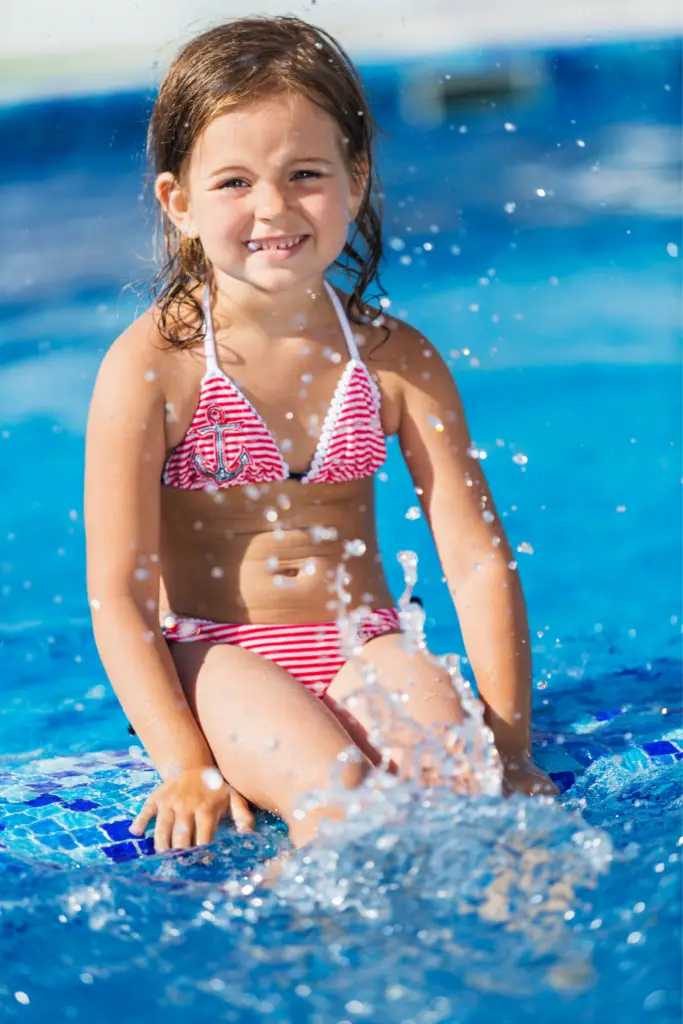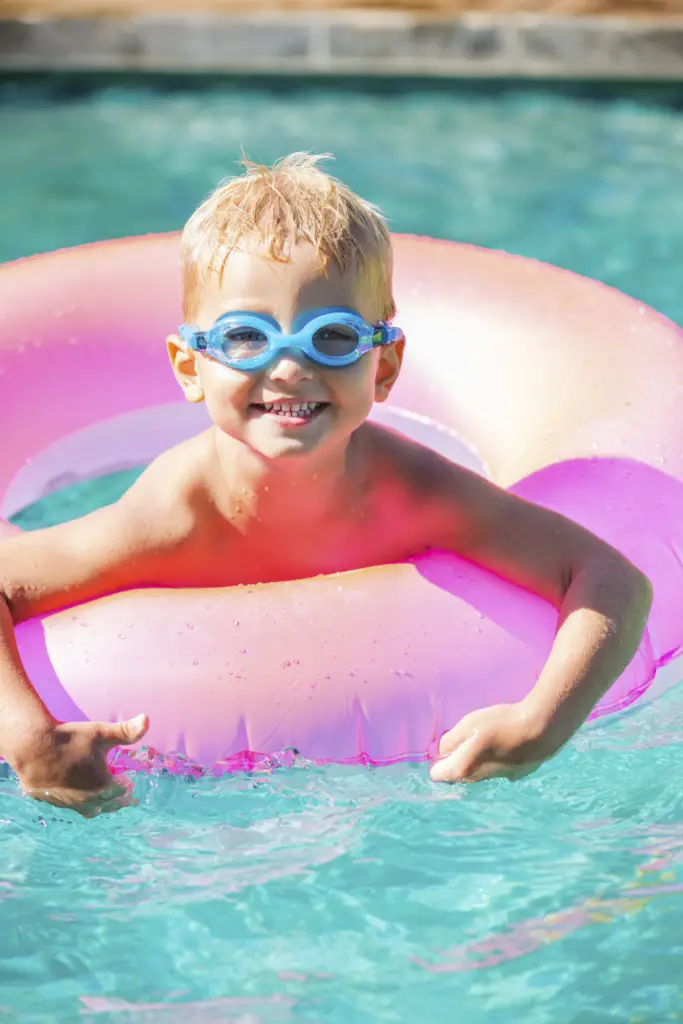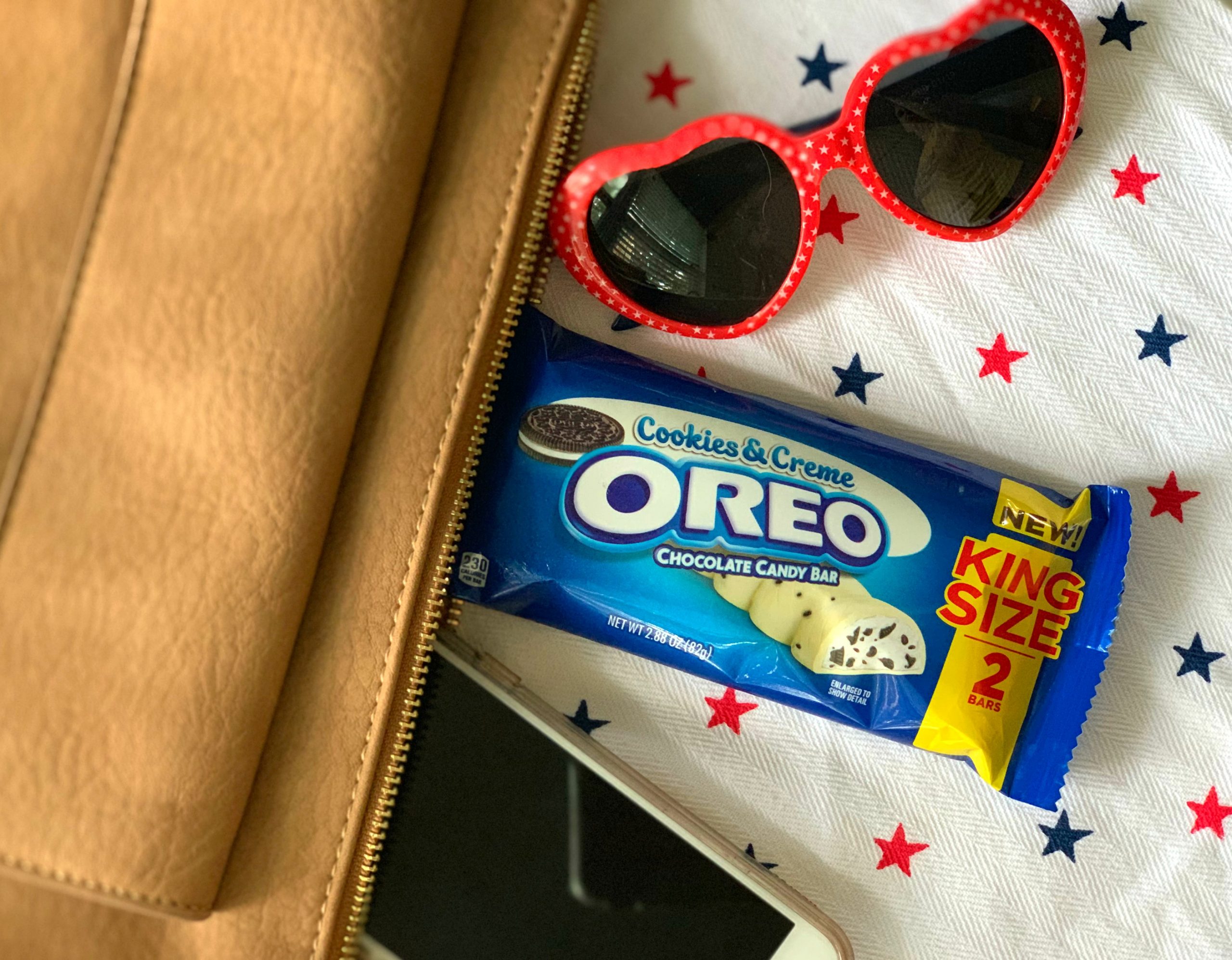Teach the Kids (and Adults) to Swim for Summer
As the weather warms up, it’s time to think about your swimming skills or to learn some if you never have. Children and adults both benefit from swimming and learning keeps everyone safer around water. Building swimming skills can begin a lifetime love of being in the water and water sports – and it will definitely make vacation and getaway trips a lot easier to choose. And for the newcomers to the family, the AAP says that you can start kids as young as one year old in the pool.

Teaching Your Child to Swim
In the past, children who didn’t know how to swim were sometimes shoved into the water to learn by the “sink or swim” method – not very helpful, and no way to develop a range of skills in the water. This approach led many children to develop a fear of the water. There’s no substitute for good teaching, and classes for swimming lessons let kids learn about water safety and the joys of exercise and muscle development. There are many infant-child swimming schools nowadays and learning all the skills is really a better way to love the water.
Through Your Child’s Eyes
For anyone who doesn’t know how to swim, a pool can be scary. It’s a large body of water where you sometimes can’t touch the bottom. This can be frightening and make you feel like you have a loss of control. That’s where training stages and specialized teaching are best employed. Today’s child programs focus on developing the working trust for the unfamiliar environment. Learning and skill development build on top of this in playful, advancing steps.
Learning to Swim
Typically in child learning programs, the novice swimmer learns to kick. This is a fun exercise for kids, and it lets children learn to enjoy the water. In these early stages, a parent is usually present in the water along with the instructor – holding the child’s hands or helping them hold onto the side of the pool.
The aim is never to rush and to get over any fear. A life vest is always available if it helps make the child comfortable and feel safe. With that established, and with no fear of sinking, the fun begins – it’s time to kick, and the more splashing the better!
Pool toys make it obvious why we’re in the water. Toys such as noodles, pool rings, or even water squirters can make time in the pool more fun and less stressful. Children will soon learn that water splashed in their faces is not necessarily a bad thing.
It’s important to limit the amount of pool time that children have. After an hour or so of kicking, playing or swimming, little bodies can get tired. Swim lessons should be short so that children don’t get bored, distracted, or overtired.
Kids should learn early how to put their face in the water, hold their breath, turn their head to take a breath, and to roll onto their back as a basic resting position. From here, that kicking can turn into moving, with progressives goals. Pretty soon, you have a water baby who loves to show some moves. Eventually, the parent gets out of the water and cheers from the poolside as the new swimmer.
Whether kids learn at a local facility or in your backyard pool, take a safe and fun approach such as this. And always practice vigilance when any kids are in the water. An adult designated monitor should be watching every second – no checking phones or reading magazines.

Benefits of Swimming
Families with children have more options when planning vacations if everyone knows how to swim. This can open up opportunities to visit the beach, explore cenotes in other countries, and simply relax in a natural environment. It also provides more opportunities for fun and healthy exercise. A one-day getaway to the local city pool, or a weekend at a water park, can add a lot of simple fun to family life.
Swimming is one of the best exercises available in that it works all the muscles in the body, promotes flexibility, and improves heart health. It also has mood-enhancing properties and can help promote mental acuity. Children who progress to team sports in the water will also have found one of the lower impact ways to develop the many qualities of character, mind, and body that come from sport.
Start Early – Never Too Late
For older adults, swimming provides an opportunity to exercise without putting additional stress on the body. For someone experiencing painful conditions such as arthritis or lower back pain, the buoyancy of the water relieves pressure while still allowing for the benefits of exercising.
Beyond improving flexibility and building muscle strength and tone, swimming can also reduce the risk of osteoporosis by building bone density. That’s significant news for older people who are trying to live their best life and reduce the risk of a bone fracture.
Teaching your kids to swim can introduce your child to a lifetime of love and respect for the water. It’s also a way to sharpen your own disciplines around water and hone your own skills. And for all family members, it’s truly never too late to learn. Family time in and around the water, in a backyard pool, or the ocean, are great times for everyone to connect and have fun.
Swimming tends to be a social experience, so older people can build new relationships and experience fewer feelings of loneliness and isolation. It’s an active way to stay in touch with the grandkids also, especially in a multi-generational vacation where all the generations can get in the water together.
As summer and warmer weather approaches, get the entire family involved in planning the next vacation, or some shorter water trips. This involves swim lessons, logistics, and weather awareness. Pick a good family beach or lake where everyone can simply have fun and spend time together. These are family times that no one will ever forget.






